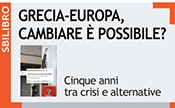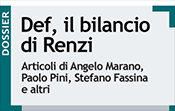Ultimi link in questa sezione
How the Case for Austerity Has Crumbled
In normal times, an arithmetic mistake in an economics paper would be a complete nonevent as far as the wider world was concerned. But in April 2013, the discovery of such a mistake—actually, a coding error in a spreadsheet, coupled with several other flaws in the analysis—not only became the talk of the economics profession, but made headlines. Looking back, we might even conclude that it changed the course of policy.
Why? Because the paper in question, “Growth in a Time of Debt,” by the Harvard economists Carmen Reinhart and Kenneth Rogoff, had acquired touchstone status in the debate over economic policy. Ever since the paper was first circulated, austerians—advocates of fiscal austerity, of immediate sharp cuts in government spending—had cited its alleged findings to defend their position and attack their critics. Again and again, suggestions that, as John Maynard Keynes once argued, “the boom, not the slump, is the right time for austerity”—that cuts should wait until economies were stronger—were met with declarations that Reinhart and Rogoff had shown that waiting would be disastrous, that economies fall off a cliff once government debt exceeds 90 percent of GDP.
Indeed, Reinhart-Rogoff may have had more immediate influence on public debate than any previous paper in the history of economics. The 90 percent claim was cited as the decisive argument for austerity by figures ranging from Paul Ryan, the former vice-presidential candidate who chairs the House budget committee, to Olli Rehn, the top economic official at the European Commission, to the editorial board of The Washington Post. So the revelation that the supposed 90 percent threshold was an artifact of programming mistakes, data omissions, and peculiar statistical techniques suddenly made a remarkable number of prominent people look foolish.
The real mystery, however, was why Reinhart-Rogoff was ever taken seriously, let alone canonized, in the first place. Right from the beginning, critics raised strong concerns about the paper’s methodology and conclusions, concerns that should have been enough to give everyone pause. Moreover, Reinhart-Rogoff was actually the second example of a paper seized on as decisive evidence in favor of austerity economics, only to fall apart on careful scrutiny. Much the same thing happened, albeit less spectacularly, after austerians became infatuated with a paper by Alberto Alesina and Silvia Ardagna purporting to show that slashing government spending would have little adverse impact on economic growth and might even be expansionary. Surely that experience should have inspired some caution.
So why wasn’t there more caution? The answer, as documented by some of the books reviewed here and unintentionally illustrated by others, lies in both politics and psychology: the case for austerity was and is one that many powerful people want to believe, leading them to seize on anything that looks like a justification. I’ll talk about that will to believe later in this article. First, however, it’s useful to trace the recent history of austerity both as a doctrine and as a policy experiment.










